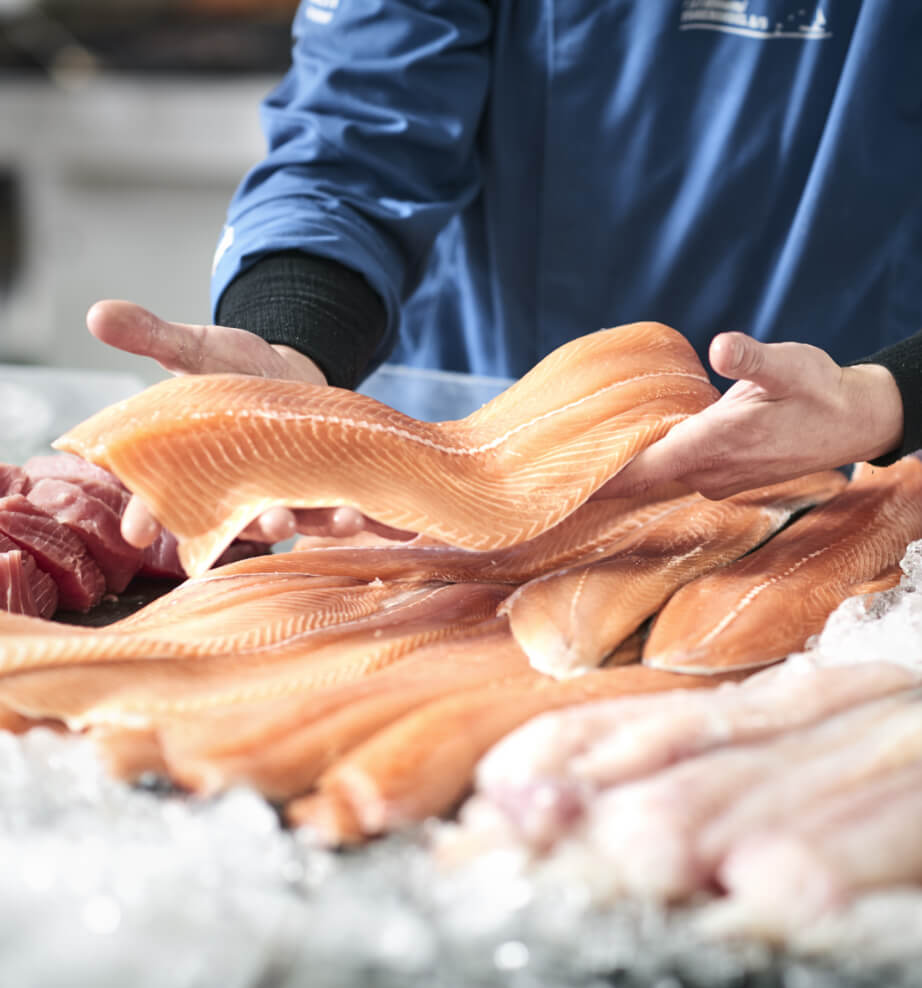
Food Safety and Health
Store Properly
Put seafood on ice or in the refrigerator or freezer soon after buying it. If seafood will be used within 2 days after purchase, store it in the refrigerator. Otherwise, wrap it tightly in plastic, foil, or moisture-proof paper and store it in the freezer. Separate for Safety
- When preparing fresh or thawed seafood, it’s important to prevent bacteria from the raw seafood from spreading to ready-to-eat food. Take these steps to avoid cross-contamination:
- When buying unpackaged cooked seafood, make sure it is physically separated from raw seafood. It should be in its own display case or separated from raw product by dividers.
- Wash your hands for at least 20 seconds with soap and warm water before and after handling any raw food.
- Wash cutting boards, dishes, utensils, and counter tops with soap and hot water between the preparation of raw foods, such as seafood, and the preparation of cooked or ready-to-eat foods.
- For added protection, kitchen sanitizers can be used on cutting boards and counter tops after use. Or use a solution of one tablespoon of unscented, liquid chlorine bleach to one gallon of water. If you use plastic or other non-porous cutting boards, run them through the dishwasher after use.

Prepare Safely
Thawing
Thaw frozen seafood gradually by placing it in the refrigerator overnight. If you have to thaw seafood quickly, either seal it in a plastic bag and immerse it in cold water or — if the food will be cooked immediately thereafter — microwave it on the “defrost” setting and stop the defrost cycle while the fish is still icy but pliable.
Cooking
Most seafood should be cooked to an internal temperature of 145ºF. If you don’t have a food thermometer, there are other ways to determine whether seafood is done.
- Fish: The flesh should be opaque and separate easily with a fork
- Shrimp and Lobster: The flesh becomes pearly and opaque
- Scallops: The flesh turns opaque and firm
- Clams, Mussels, and Oysters: The shells open during cooking — throw out ones that don’t open
Uncooked spoiled seafood can have an ammonia odor. This odor becomes stronger after cooking. If you smell an ammonia odor in raw or cooked seafood, do not eat it.